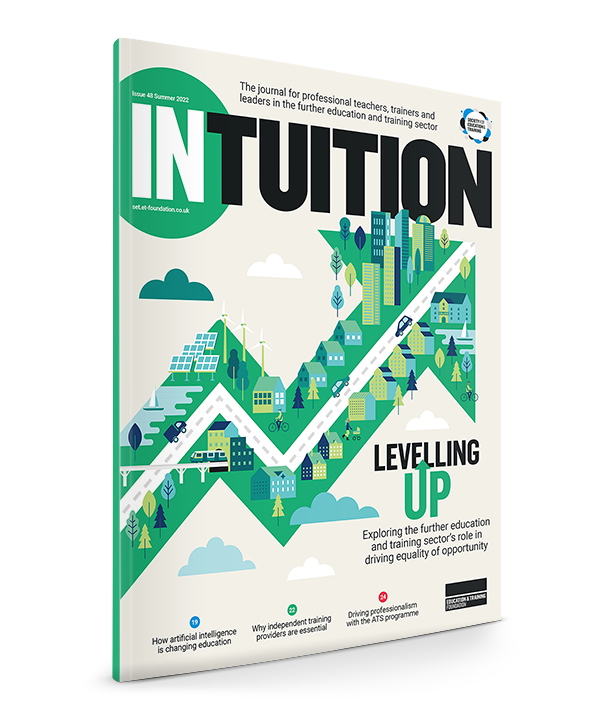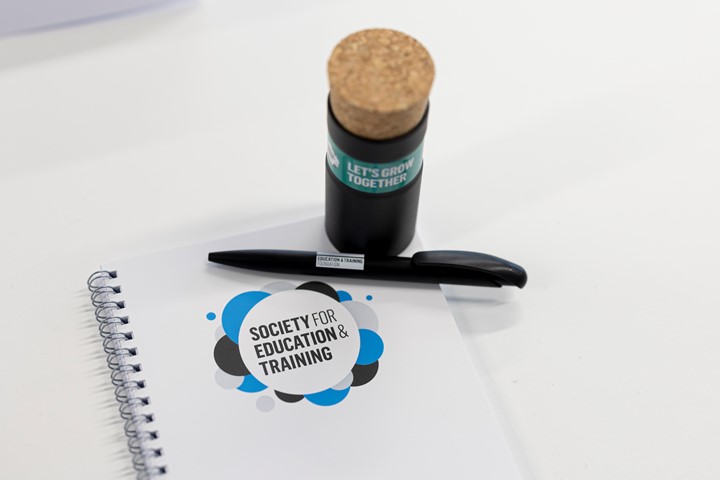inTuition taster: Taking control (learner owned-learning)
Allowing learners to take responsibility for their own development can help them develop skills that will empower them in education and beyond. Beth James outlines some tips on how to go about it.

A continuous concern within education is the achievement of our learners, ensuring they have the skills and knowledge to progress into further studies or employment and become integrated into society.
Inspiring learners through sharing knowledge and skills is a shared process, no matter the level of education a learner finds themselves at. Therefore, when learners do not ‘achieve’, it is natural to question why this has happened to ensure that they are given the chance and support to succeed.
Theorists have looked into reasons for lack of achievement and suggested links to class, gender and ethnicity. This deficit thinking, however, is outdated and fails to look at the complex wider picture that young people are experiencing. If learners are labelled by these constraints, it would reduce rather than enhance their opportunities.

A recent study by Gruijters et al (2023) has provided evidence that places reduced emphasis on the significance socio-emotional skills have on achievement. It suggests that focusing on developing character skills in learners to improve achievement may not have as much impact as expected.
While improving learners’ character is not unwarranted, the building of skills and confidence in learners is a vital part of teaching. This idea that learners are the barriers to their own success is detrimental to both learners and teachers. For learners, this has the possibility of further disengaging them with their educational experience and could cause downward spirals of their confidence. For teachers, this could risk a false belief that they cannot help or support learners until they have built a character ready to ‘achieve’ educationally.
Therefore, it is vital that teachers can see the big picture of what may impact learners and take some action to support them, as well as mitigate factors that not only help them build character but feel that they are active members of the educational community.
To do this, learners need to be encouraged and supported to take ownership of their learning. This will provide a platform of collaborative learning that establishes joint responsibilities of teachers and learners within their learning and development journey. As the National Institute for Excellence in Teaching (2021) suggests, it is through learners actively taking a role in their learning that they will be empowered to develop a wide range of skills to use during education and in later life.
Facilitating learner ownership can be achieved through ensuring their needs are met by challenging and mitigating the big-picture problems, which would allow learners to focus on their own development.
The following ideas suggest some strategies to build on a co-facilitated learning environment:
1. Make no assumptions
Learners both face and have faced a variety of barriers to their learning so it is vital to never assume the skills and knowledge they have. A major barrier which still has a noticeable impact on learners is Covid-19 (Education Endowment Foundation, 2022), with some encountering drastically different schooling due to both institutional and personal access to online technology. This experience is one factor that could have had a ripple effect in the skills and knowledge learners have.
Therefore, avoid making assumptions and instead build in opportunities to practise and develop skills organically. Use Bloom’s taxonomy to create space within the class for learners of all levels of skills and experiences to promote what they already know: a constructivist knowledge-building model (Gershon, 2015).
Challenge them by using activities which build from lower- to higher-level skills naturally, and learners will build the confidence and a more habitual approach to taking ownership of their learning.
2. Encourage scaffolded discovery learning
A misconception with facilitated learning is that teachers are ‘hands-off’ in the classroom. However, this is not the case. It is about creating an environment where learners are supported to discover information to enhance their own skills and knowledge.
To encourage ownership, people should be given opportunities to take responsibility for their learning. This is achievable through discovery activities, but they need to be supported by the teacher.
For example, when tasked with researching and note-taking, learners could be given a list of sources to start their research or even a checklist of terminology or criteria to be included in their notes. Learners would have direction as a starting point while having space to personalise their work. For teachers, they will have room to monitor and support learners as the need arises.
3. Promote learner choice
Learner ownership challenges people to go from doing and understanding in the classroom to being an active participant – a stakeholder – in their own learning experience and environment. Ownership includes sharing their skills and knowledge with others, as well as creating strategies, and using these both in and out of the classroom.
A shift from learner engagement to ownership could be achieved through inclusivity. This can be through setting tasks where the aims could be achieved through different approaches to suit their individual needs.
A simple example would be having learners compile notes to best suit them. This could include note-capture as a poster, a mind-map, written structured notes, a digital resource, colour-coded flashcards and so on. Learners will own their created resource, which will boost their confidence alongside their knowledge.
The Education and Training Foundation’s inclusivity framework (2024) contains further examples on developing inclusive teaching to support all learners.
4. Use feedforward for reflection
Teachers giving feedforward – the process of discussing and creating targets on how to progress meaningfully instead of focusing on what they achieved in the past – empower learners to address these areas and reflect on how to strengthen them.
Having learners regularly reflect on their skills and progress, and setting their own targets, will promote self-aware individuals who can take ownership of their learning both in and outside the classroom. Learner ownership is, therefore, a stepping stone on a journey to achievement and, subsequently, into higher education, apprenticeships or employment.
5. Facilitate a community of practice
Learner ownership is more likely to be successful when learners feel part of a community of practice. Wenger-Trayner (2015) discussed how formal and informal communities of practice can be formed within education.
By encouraging learners to partake in these groups, they see the worth in their own skills and knowledge, and actively share this with their peers to promote a positive learning environment. It is then through sharing their learning with both the teacher and their peers that the learner has co-led the lesson, making their experience more concrete and substantial.
Learners are both acting as and learning from ‘most knowledgeable others’, which, as Vygotsky suggested, helps them develop understanding and skills (Bates, 2016). Making space for group discussions, collaborative activities or learner-led presentations will only empower learners collectively and let them achieve ownership.
References
Bates, B. (2016) Learning Theories Simplified. London: SAGE.
Education Endowment Foundation (2022) The Impact of COVID-19 on Learning: A Review of the Evidence.
Education and Training Foundation. (2024) Making Learning Accessible.
Gershon, M. (2015) How to Use Bloom’s Taxonomy in the Classroom: The Complete Guide. US: CreateSpace.
Gruijters, R.J., Raabe, I.J. and Hübner, N. (2023) Socio-emotional skills and the socioeconomic achievement gap. Sociology of Education.
National Institute for Excellence in Teaching. (2021) Learning Acceleration Resources: Student Engagement Versus Student Ownership.
Wenger-Trayner, E. and Wenger-Trayner, B. (2015) Introduction to Communities of Practice: A Brief Overview of the Concept and Its Uses.
Beth James is lecturer in criminology and sociology at Telford College
Image credit: iStock

Find out more about inTuition
inTuition is SET’s quarterly professional magazine supporting members' access to CPD resources and the latest sector and research news. It combines sector news with educational research and exciting practical developments and ideas in education and training.
Find out more





